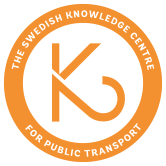The ongoing COVID-19 pandemic has brought a series of unprecedented challenges to the public transport sector. Public transport authorities, operators and users are faced with new constraints and responsibilities and can rely on a still limited and evolving body of scientific knowledge to take informed decisions.
This working paper presents a review of the international academic literature on the way in which public transport operations and use have been affected by the COVID-19 pandemic. Collecting academic articles belonging to multiple disciplines, the review presents a series of findings and recommendations pertaining to the new coronavirus’ routes of transmission (Chapter 2), the challenges emerging as a consequence of the pandemic (Chapter 3) and the related recommendations (Chapter 4).
The routes of transmission for SARS-Cov-2, the virus causing COVID-19, are contact transmission (when there is a direct contact with an infected person or a contact with a contaminated surface), droplet transmission (when, in proximity with an infected person, the virus is transmitted by both large and small respiratory droplets containing the virus), and airborne transmission (when the virus is transmitted by smaller droplets and particles suspended in the air). The relative contribution of the different transmission pathways is still uncertain, but the most recent evidence suggests that droplet and airborne transmission are the major ones. Further, there is still no clear knowledge about how SARS-CoV-2 is transmitted in public transport and whether its use increases the risk of being infected. However, higher risks of infection are related to the close proximity among passengers, the many high-touch surfaces, the use of potentially crowded spaces (such as transport hubs and stations), and the lack of access controls. Distance and duration of the trip also play a role. The use of face masks, frequent cleaning, and proper ventilation appear to be important countermeasures.
A series of interrelated challenges and policy responses emerged from the pandemic’s impact on public transport. The challenges identified by the literature pertain to public health, changing travel behaviours and attitudes, financial sustainability, social equity and sustainable mobility. The need to safeguard the health of passengers and of on-board workers while, at the same time, guaranteeing the operation of the public transport service led to a series of heterogeneous responses. They include service suspension, reduced frequency, discouraged use, reduced capacity of vehicles, fare suspension and rear-door boarding, hygiene measures, design interventions and use of personal protective equipment (PPE). The relative impact of these responses is still unclear. For what concerns emerging travel behaviours, public transport ridership has seen a steep decrease in many countries as an effect of non-pharmaceutical interventions, public authorities’ recommendations, and the concern over contracting or spreading the virus. Not only travel behaviours have changed, but also attitudes towards public transport appear to have worsened. A further challenge pertains to the financial sustainability of public transport. The decline in demand, measures impacting the payment of fares (e.g. compulsory rear-boarding or the decrease in ticket inspections), the increase of certain items of expenditure (such as those related to hygiene procedures, purchase of PPE and increased supply to comply with physical distancing rules) and the unavailability of public funds to subsidize public transport emerge as the main causes of financial instability and risk of bankruptcy for public transportation. These emerging constraints further jeopardize the ability of public transport to guarantee accessibility and, thereby, contrast the risks of transport-related social exclusion. Public transport may be the only option for many users who are unable or unwilling to walk, cycle or drive a car and who still have to carry out necessary out-of-home activities. Further, research shows that working from home during the pandemic is mostly a privilege of people with higher incomes. Lastly, the pandemic poses a threat to sustainable mobility both because of the shift to private motorized vehicles and since the decreased ridership jeopardizes the role of buses in emissions reductions.
For what concerns scenarios and recommendations, the literature on COVID-19 and public transport stresses the need for further research to support evidence-based decision making. This will be pivotal to address the delicate trade-off between the aforementioned challenges. Public transport needs multi-pronged strategies to enhance safety and find a viable balance between the different demands related to its governance, provision and use. Recommendations emerging from the reviewed literature pertain to general health-related measures, strategies for supply-, crowd- and demand management aimed at physical distancing, and advices for safeguarding the equity and sustainability goals of public transport.
